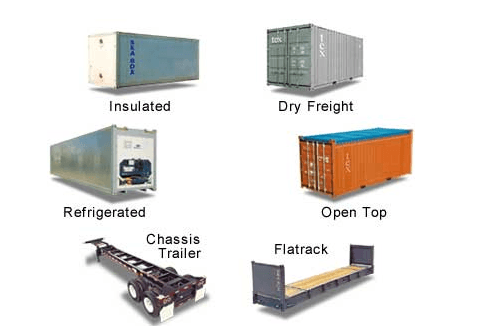When dealing with over-length, over-width, and over-height cargo, choosing the right type of specialty container is the first step to controlling costs and ensuring safety. Open-top (OT), flatbed (FR), and platform are the three most common options. This article will provide you with a clear decision-making framework.

I. Quick Decision-Making Flowchart
First, you can follow the following logic to make a quick decision:
A [Is the cargo over-height?] — Yes –> B [Select: Open-top OT]
A — No –> C [Is the cargo over-width/needs side loading/unloading?]
C — Yes –> D [Select: Flatbed (FR)]
C — No –> E [Is the cargo over-length/heavy?] =E — Yes –> F [Select: Platform]
E — No –> G [Standard Containers Required]
II. In-Depth Comparison Analysis
Features: Open Top, Flat Rack, Platform
Structure: No rigid top, with removable canvas awning and foldable end doors. No top and no side walls, with fixed/folding end walls. No top, no side walls, no end walls, pure chassis
Applicable Cargo: Extra-high cargo, such as machinery, glass, and stone. Extra-wide and extra-heavy cargo, such as machinery, vehicles, and steel. Extra-long and extra-heavy cargo, such as rail components and wind turbine blades
Loading and Unloading Method: Top-lift, Top and side lift/Roll-on/Roll-off, Top and side lift/Roll-on/Roll-off
Cost: Medium, High, Highest (with the highest surcharge)
Safety: Requires inner lining with waterproof cloth to protect against rain and moisture. Requires extremely high lashing and reinforcement. Requires the highest lashing and reinforcement requirements, with fully exposed cargo
III. How to Make the Final Choice?
1. Prioritize loading and unloading methods: Is your cargo best suited for overhead loading (OT) or side loading (FR or Platform)?
2. Calculate total costs: Rack containers typically have the highest ocean freight and various surcharges. If a flatbed container can meet your needs, it may be more economical than a rack container.
3. Consult a professional: Send your logistics consultant the detailed dimensions, weight, and photos of your cargo. They will provide the most professional container type recommendations.
There’s no such thing as the best container type, only the most suitable one. Accurately assess the properties of your cargo, understand the characteristics of different container types, and work with you to determine the best container type.
